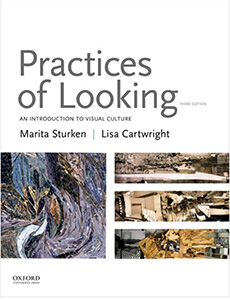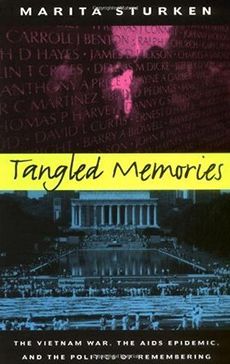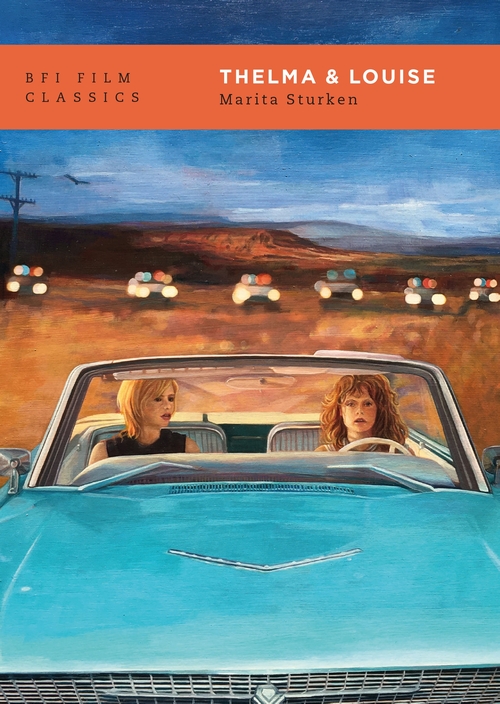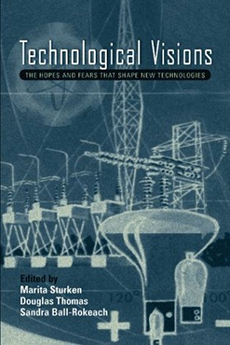BOOKS

Terrorism in American Memory: Memorials, Museums, and Architecture in the Post-9/11 Era
by Marita Sturken
Paperback: 320 pages
Publisher: New York University Press, 2022
This book examines the role of cultural memory in the post-9/11 era of American culture, an era that begins with 9/11 memorialization and ends with battles over the memory of racial injustice. The book argues that 9/11 was a shaping force in the two decades that followed, and that the post-9/11 era came to a close in the disruption of the global pandemic and protests of 2020. The post-9/11 era thus begins with the numerous nationalistic memorial projects of 9/11 and ends with the radical intervention of the lynching memorial and Legacy Museum in Montgomery, Alabama, a project that dramatically rewrites the national script of American history. A key argument of the book is a rethinking of the memory of terrorism in the United States, with the memory of victims of racial terrorism, such as lynching, on a continuum with those killed by foreign terrorism. Terrorism is thus not simply a force that comes from outside the nation to threaten it, as 9/11 is narrated, but a foundational aspect of American culture.
The book looks in depth at the proliferation of 9/11 memorials, with thousands of memorials built from the bent steel of the twin towers throughout the country, the 9/11 museum in New York, and the architectural rebuilding of lower Manhattan as an intermix of memorialization, securitization, commercialization, and starchitecture. It analyzes the erasure of the post-9/11 wars in Iraq and Afghanistan and the memory projects that have aimed to render their human and economic costs visible. Finally, it analyzes the National Memorial for Peace and Justice and the Legacy Museum as projects of memory activism that aim to memorialize the legacies of slavery and lynching as a means to intervene into the consequences of mass incarceration in the present. The book deploys an interdisciplinary approach to investigate the intersections of nation, memory, architecture and design, and social justice in order to contribute to an understanding of the contemporary period of disruption and upheaval in American history.
![]()

Tourists of History: Memory, Kitsch, and Consumerism from Oklahoma City to Ground Zero
by Marita Sturken
Paperback: 360 pages
Publisher: Duke University Press, 2007
Tourists of History examines the ways that over the past two decades, Americans have responded to national trauma through consumerism, kitsch sentiment, and tourist practices in ways that reveal a tenacious investment in the idea of America’s innocence. The book investigates the consumerism that followed from the September 11th attacks; the contentious, ongoing debates about memorials and celebrity-architect designed buildings at Ground Zero; and two outcomes of the bombing of the Alfred P. Murrah Federal Building in Oklahoma City: the Oklahoma City National Memorial and the execution of Timothy McVeigh.
A key argument of the book is that a consumer culture of comfort objects such as World Trade Center snow globes, FDNY teddy bears, and Oklahoma City Memorial t-shirts and branded water, as well as reenactments of traumatic events in memorial and architectural designs, enables a national tendency to see U.S. culture as distant from both history and world politics. A kitsch comfort culture contributes to a “tourist” relationship to history: Americans can feel good about visiting and buying souvenirs at sites of national mourning without having to engage with the economic, social, and political causes of the violent events. While arguing for the importance of remembering tragic losses of life, the book is urging attention to a dangerous confluence—of memory, tourism, consumerism, paranoia, security, and kitsch—that promulgates fear to sell safety, offers prepackaged emotion at the expense of critical thought, contains alternative politics, and facilitates public acquiescence in the federal government’s repressive measures at home and its aggressive political and military policies abroad.
![]()

Practices of Looking: An Introduction to Visual Culture
by Marita Sturken and Lisa Cartwright
Paperback: 490 pages (3rd Edition)
Publisher: Oxford University Press, 2018
Practices of Looking, which was first published in 2001, is now in its Third Edition. This book, which I co-authored with Lisa Cartwright, is an introductory text designed for the classroom and for courses in visual culture, media studies, communication, and design. The book explores key theories and strategies to examine visual culture across a broad array of social arenas, such as art, activism, design, journalism, news, advertising, law, and science. It is well illustrated in color, and has ten chapters covering image politics, representation, modernity, semiotics, aesthetics, visuality, ideology, spectatorship, perspective, visual technologies, copyright, media cultures, brand culture, advertising, parody, simulation, scientific images, and the global flow of culture through such media as photography, painting, television, film, video games, and virtual reality and in the fields of art, architecture/design, news media, activism, and media studies. We have a Facebook page about the book where we will regularly post related material and Oxford University Press offers teaching materials and a teaching guide at https://arc2.oup-arc.com/access/sturken-3e-instructor-resources
![]()

Tangled Memories: The Vietnam War, The AIDS Epidemic, and The Politics of Remembering
by Marita Sturken
Paperback: 368 pages
Publisher: University of California Press, 1997
Analyzing the ways U.S. culture has been formed and transformed in the 1980s and 1990s by its response to the Vietnam War and the AIDS epidemic, Tangled Memories looks at how each has disrupted our conventional notions of community, nation, consensus, and "American culture." The book examines the relationship of camera images to the production of cultural memory, the mixing of fantasy and reenactment in memory, the role of trauma and survivors in creating cultural comfort, and how discourses of healing can smooth over the tensions of political events.
A key element of the book is an analysis of the Vietnam Veterans Memorial and the AIDS Quilt, in particular a reading of the Memorial as a national wailing wall—one whose emphasis on the veterans and war dead has allowed the discourse of heroes, sacrifice, and honor to resurface at the same time that it is an implicit condemnation of war. The book also includes discussions of the Kennedy assassination, the Persian Gulf War, the Challenger explosion, and the Rodney King beating. While debunking the image of the United States as a culture of amnesia, the book also shows how remembering itself is a form of forgetting, and how exclusion is a vital part of memory formation.
![]()

Thelma and Louise
by Marita Sturken
Paperback: 94 pages
Publisher: British Film Institute, Second Edition, 2020
Thelma and Louise sparked a remarkable public discussion about feminism, violence and the representation of women in cinema. This BFI monograph examines the production and reception of the film, and goes on to analyze its rich account of gender politics, landscape, and gun culture.
![]()

Technological Visions: Hopes And Fears That Shape New Technologies
edited by Marita Sturken, Douglas Thomas, and Sandra Ball-Rokeach
Paperback: 304 pages
Publisher: Temple University Press, 2004
For as long as people have developed new technologies, there has been debate over the purposes, shape and potential for their use. In this collection, a range of contributors discuss the visions that have shaped new technologies and the cultural implications of technological adaptation.